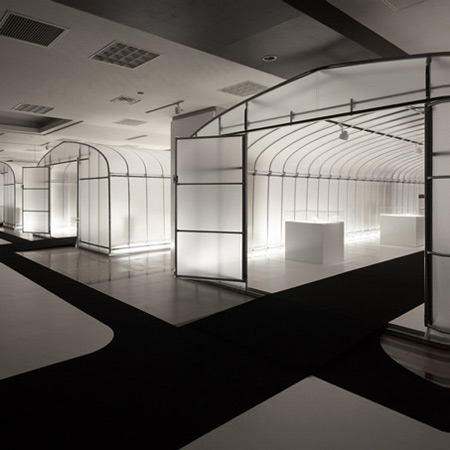
International Triennale of Kogei by Nendo
Five agricultural growing tunnels stand inside a former book store in Kanazawa, Japan, for this exhibition designed by Japanese studio Nendo.
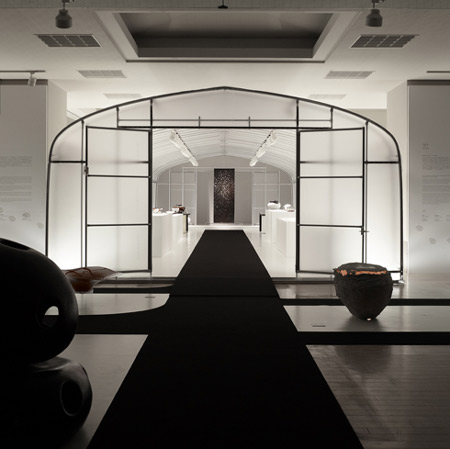
Created for the inaugural International Triennale of Kogei, the installation provides five exhibition spaces to be curated separately, without disturbing the shop fittings that remain in place.
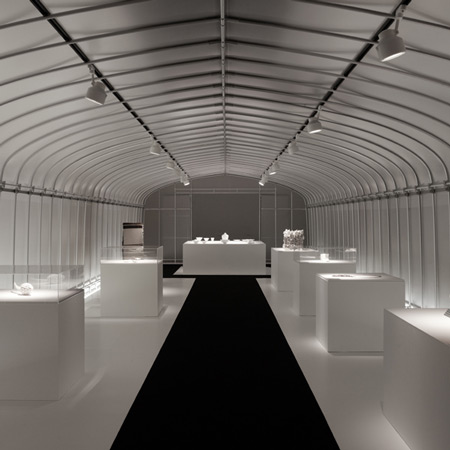
Each enclosure is lit from without the translucent plastic walls while black strips of carpet guide visitors through the exhibits.
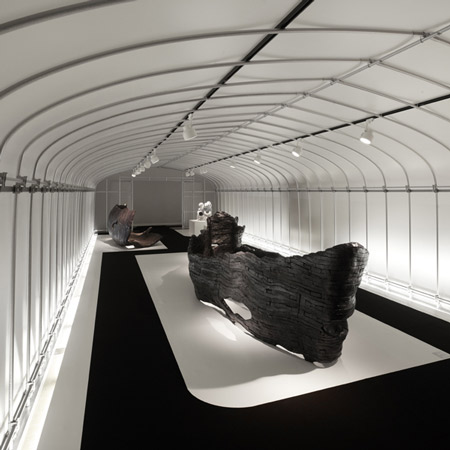
The installation remains on show until 20 June.
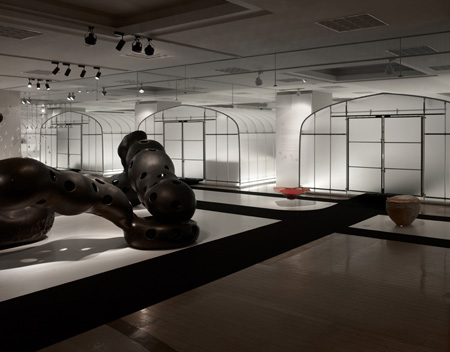
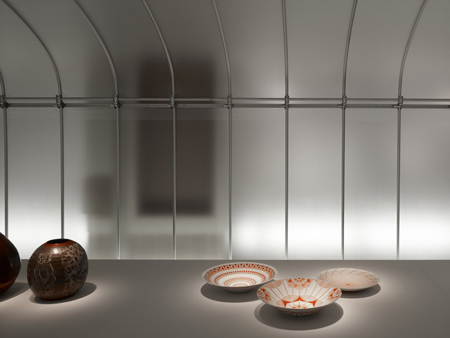
More about Nendo in our special category.

Photographs are by Daici Ano.
Here are some more details from Nendo:
First International Triennale of Kogei
in Kanazawa, Japan
The venue called Rifare was formerly the remaining space left over from a large bookstore, and its temporary use as an exhibition venue necessitated that the empty retail space be left more or less intact, without placing drastic changes to the leftover interior.
Working within a limited budget, we were also required to obtain ample space for use by five curators.
For this reason, we decided that we would set up five pre-fabricated agricultural greenhouses made of plastic within the venue space and turn them into individual gallery spaces.
The lighting used to highlight the works inside would softly pour from the translucent plastic walls, and their gentle glow turned the greenhouses into large lanterns of light.
Moreover, winding ”trails” of black stapled carpets ran throughout the exhibition venue, with white vinyl panels for displaying the works positioned alongside there “trails”.
While keeping costs low, we were thus able to create the semblance of “farmland” that partitioned the area where people would walk and where the works would be displayed.
This form of expression was in fact an expanded version of the “home-use greenhouse” that we had used at our pre-event venue held half a year earlier, and we found that this environment was most suitable for expressing the development and growth of crafts in the unique “soils” of Kanazawa.
See also:
.
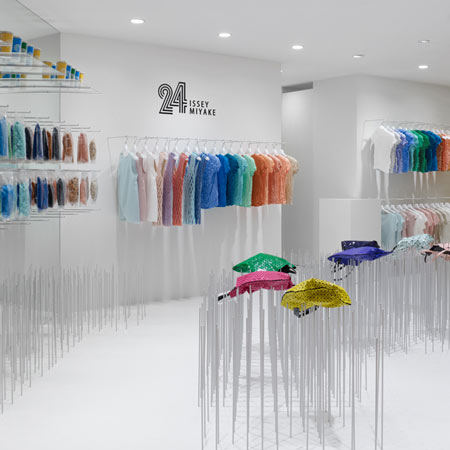 |
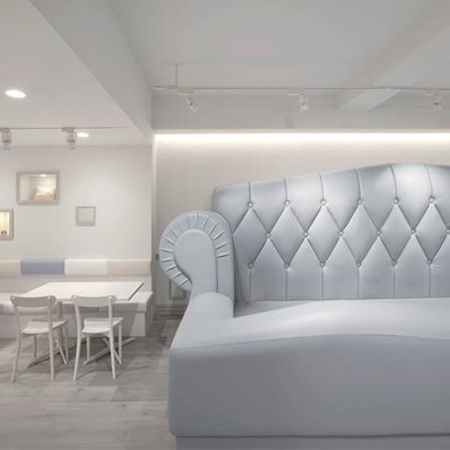 |
 |
| 24 ISSEY MIYAKE Shop by Nendo |
Tokyo Baby Cafe by Nendo |
ASOBIO shop by Nendo |